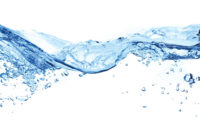Over 80 attendees, comprised of contractors, wholesalers, manufacturers reps and engineers, joined Holohan for a full day of roundtable discussions on hot-button hydronic heating issues affecting the various branches of the plumbing and heating industry.
Suggested topics were assigned to several tables, though new categories opened up throughout the day. Subjects up for discussion included Steam Heat, Radiant Slab & Staple-Up, Radiant Controls, Wood-fired Boilers, Snow-Melt, Control Strategies, Fuel & Venting Issues, European Hydronics, Hiring and Training, Marketing Hydronics, Professionalism, Carbon Monoxide, Indoor Air Quality and Writing. The structure of the gathering was kept loose, as attendees were encouraged to change tables and join ongoing discussions according to their own schedule and interest level.
Here are some of the conclusions that resulted from these "heated" discussions:
- "Engineering education has changed, and not for the better. Hand calculations and drafting aren't taught anymore, computer design has taken over, and new engineers aren't familiar with boiler rooms."
- "We need to find a way to combine hydronics and high velocity air conditioning -- to integrate the two systems, so plumbers can do all the work on the system."
- To market hydronics, educate customers on what a good engineer/contractor/wholesaler/manufacturer should do for them; send pictures of successful installations or projects out with proposals; exhibit and present seminars at home shows; word of mouth is a popular marketing tool; "Yellow Pages" ads don't bring in quality customers, and aren't worth the money; negative selling only comes back to bite you, so sell the positives; make sure your customer service is up to par.
- "Natural gas burns more cleanly in a heating system and there is no waste, but it is expensive -- With oil, you get sludge on the bottom of the tank, and that gets stirred up and causes problems -- Steam is a good fuel because there are so many types of systems - single pipe, two-pipe, vacuum -- but there are problems because the contractors don't know much about them, so they install them wrong; that brings the service guys more work, though."
- In radiant slab and staple up systems, the types of tubing available -- EPDM, PEX and copper -- offer different advantages. "Copper has a higher heat transfer, so some engineers say it is best. But some say if the walls are better insulated, you don't need high heat transfer and can use PEX. The differences are finite to engineers; the homeowners only care if the floors are warm."



